Anxiety Is Not a Life Sentence—It’s a Thought Pattern: How to Reshape It with Patience and Practice
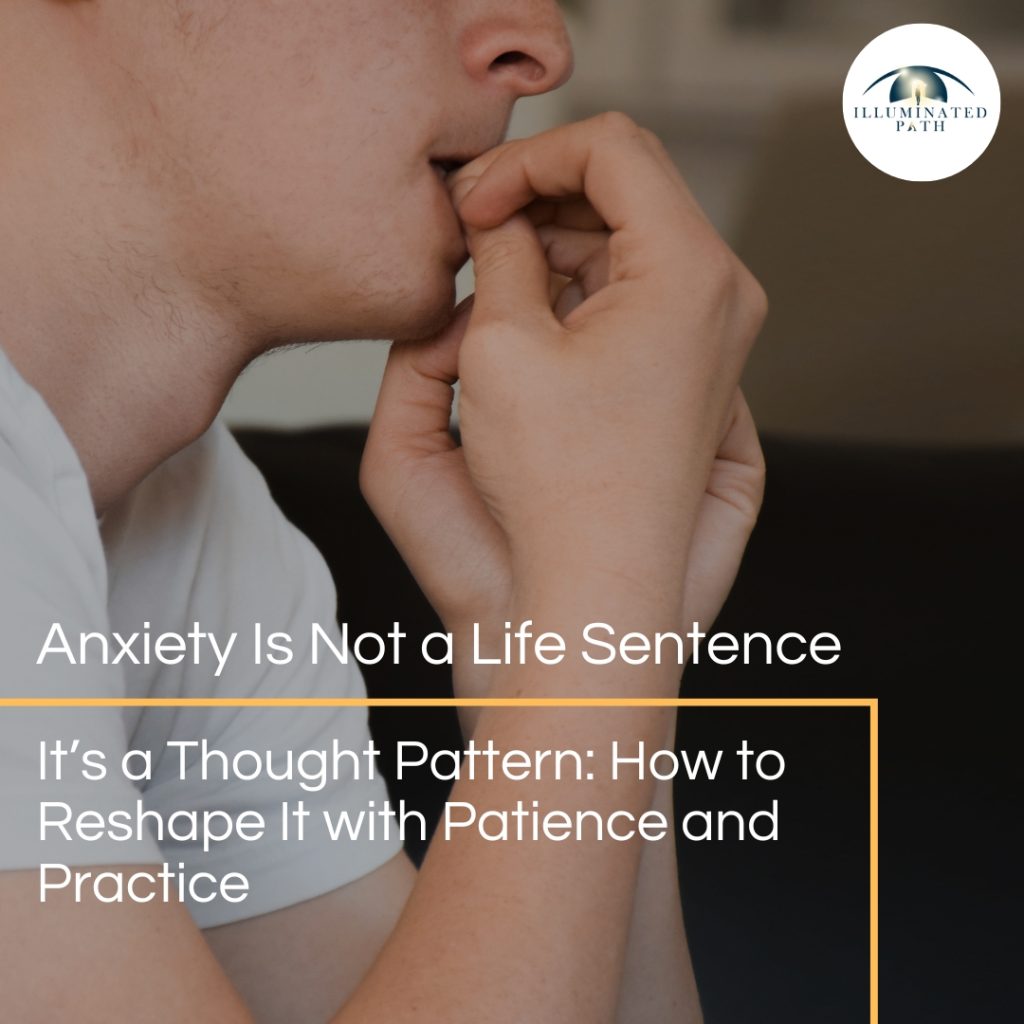
Anxiety can feel like a life sentence—relentless, exhausting, and inescapable. It can settle into your daily life like an unwanted roommate, whispering worst-case scenarios into your ear and clouding even your happiest moments with unease. But here’s the truth: anxiety isn’t your identity, your destiny, or a permanent condition. It’s a pattern of thoughts—learned, habitual, and most importantly, changeable. With awareness, patience, and practice, these thought patterns can be reshaped. If you’re someone who has felt stuck in a cycle of anxious thinking, this post is for you. You’ll learn what anxiety really is, how it operates in the mind, and most importantly, what you can do to break free from its grip—one thought at a time. Understanding Anxiety as a Thought Pattern Let’s begin by redefining anxiety—not as a character flaw, but as a mental habit. Anxiety often stems from repetitive, unhelpful thoughts about what might go wrong. These thoughts are part of a larger system of cognitive distortions—ways the brain tries to make sense of uncertainty but ends up creating distress instead. Some of the most common anxiety-driven thought patterns include: Catastrophizing: Imagining the worst possible outcome in every situation, even if it’s unlikely. All-or-nothing thinking: Believing that things are either perfect or a disaster, with no in-between. Overgeneralizing: Assuming that one bad experience means every similar experience will be bad. Personalization: Blaming yourself for things you’re not actually responsible for. Fortune-telling: Predicting negative outcomes as if they’re facts. These patterns don’t happen because you’re weak or broken. They happen because your brain is trying to protect you—anticipating threats to keep you safe. But when these mental habits run unchecked, they become the source of the very distress they’re trying to prevent. The Brain Can Change—And So Can Your Thoughts One of the most hopeful discoveries in modern psychology and neuroscience is the concept of neuroplasticity. Simply put, your brain can change. When you practice a new thought or behavior repeatedly, your brain creates and strengthens neural pathways to support it. Just like muscles adapt through training, your mind can learn healthier ways of thinking. This is where therapies like Cognitive Behavioral Therapy (CBT) and Mindfulness-Based Cognitive Therapy (MBCT) come in. They don’t just help you cope—they help you retrain your mind. In CBT, you learn to identify distorted thoughts and replace them with more balanced and realistic ones. For example, instead of thinking “I’m going to fail,” you might replace it with “I’ve prepared as best I can, and I’ll do my best.” This small shift changes your emotional response—and over time, it can change your life. Mindfulness, on the other hand, teaches you to observe your thoughts without judgment. When you stop identifying with every anxious thought that enters your mind, you give yourself space to choose how you want to respond, rather than react out of fear. How to Begin Reshaping Anxious Thoughts Changing the way you think doesn’t happen overnight. But it can happen. Here are some practical, proven techniques that support this transformation. 1. Start With Awareness Before you can change a thought, you have to notice it. Pay attention to moments when anxiety spikes. What were you thinking right before you felt anxious? What story were you telling yourself? Keeping a thought journal can be immensely helpful. Write down your anxious thoughts as they come, along with what triggered them and how you responded. Over time, you’ll begin to notice patterns—specific fears, common themes, or situations that set off your anxiety. 2. Challenge the Narrative Once you’ve identified recurring thoughts, it’s time to challenge them. Ask yourself: Is this thought based on facts or fear? What evidence supports this thought? What evidence contradicts it? If my friend had this thought, what would I say to them? This technique, known as cognitive restructuring, helps you replace unhelpful beliefs with more balanced ones. For example, “I’ll never be good enough” might shift into “I’m still learning, and that’s okay.” 3. Practice Mindfulness to Create Space Mindfulness helps you step back from your thoughts instead of getting swept away by them. When practiced regularly, mindfulness increases emotional regulation, reduces reactivity, and strengthens your ability to stay present. Try starting with just five minutes a day. Sit quietly, focus on your breath, and when thoughts arise (as they inevitably will), gently return your attention to your breath. You’re not trying to eliminate thoughts—just observe them without judgment. Over time, this practice builds mental clarity and calm. 4. Run Behavioral Experiments Anxiety thrives on assumptions. One of the most effective ways to test those assumptions is through behavioral experiments. Let’s say you’re convinced that speaking up in meetings will lead to embarrassment. You might challenge this by preparing one small comment to contribute and then noting the outcome. Chances are, the worst-case scenario won’t happen—and you’ll collect evidence that your fear isn’t based in reality. Each time you take a small step toward your fear and find that you’re okay, your brain rewires itself with that new information. Change Takes Time—So Be Patient With Yourself One of the most overlooked parts of anxiety recovery is the importance of patience. Changing thought patterns is like learning a new language—it requires time, repetition, and self-compassion. You’ll have days where your progress feels strong, and days where it feels like you’ve taken three steps back. That’s normal. What matters isn’t perfection, but persistence. Here are a few ways to stay consistent on your journey: Set Realistic Goals Instead of aiming to “get rid of anxiety,” try setting smaller, more achievable intentions, like: “This week, I’ll practice mindfulness for 5 minutes each day.” “I’ll write down one anxious thought and challenge it once a day.” “I’ll speak kindly to myself when I’m feeling overwhelmed.” Consistency is more powerful than intensity when it comes to change. Celebrate Small Wins Anxiety often makes us focus on what’s going wrong. Flip that script by actively acknowledging what’s going right.Did you challenge a negative thought today? Great.Did you pause before reacting to an anxious
From Survival to Empowerment: Healing Childhood Trauma and Embracing Your Inner Strength.
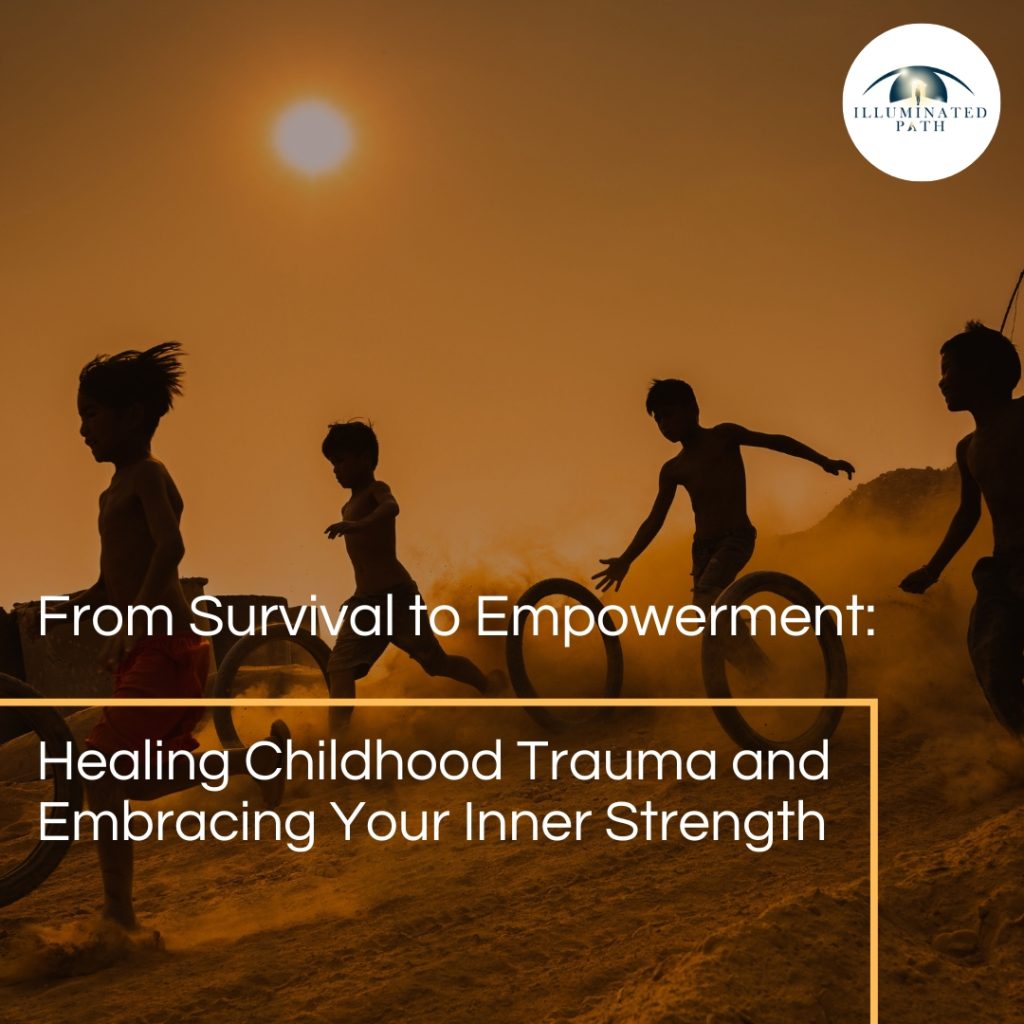
True intimacy begins where performance ends. It’s not about perfection or constant agreement. It’s about two people showing up authentically—vulnerabilities, fears, and all—without the fear of judgment. This kind of connection is rare, but it’s also the most rewarding. What Is True Intimacy? (And What It’s Not) Intimacy is often confused with physical closeness or romantic gestures. But true intimacy is emotional and psychological. It’s the deep sense of closeness that comes from mutual openness, trust, and emotional safety. True intimacy is: Being able to share your deepest thoughts and feelings without fear Feeling emotionally safe and accepted Being seen and loved for your authentic self True intimacy is not: Constant agreement or avoiding conflict Performing or pretending to be someone you’re not Relying solely on physical closeness without emotional connection As noted by Psychology Today, emotional intimacy is the glue that holds relationships together, enabling individuals to express their true selves without fear of judgment or rejection . Why Vulnerability Is the Gateway to Connection Dr. Brené Brown, a leading researcher on vulnerability, says: “Vulnerability is the birthplace of love, belonging, joy, courage, empathy, and creativity.” the outcome. It’s the willingness to say, “This is me,” even when we fear rejection. When both partners embrace vulnerability, they create a space where true intimacy can flourish. It allows for deeper understanding, empathy, and connection . The Fear of Judgment: Intimacy’s Greatest Barrier Many people avoid vulnerability because they fear judgment or rejection. This fear can prevent partners from sharing their true feelings and experiences, leading to a lack of emotional connection . Common fears include: “If I show my true self, they won’t love me.” “If I express my needs, I’ll seem needy or weak.” “If I reveal my past, they’ll judge me.” These fears can lead to emotional walls, preventing genuine connection. But hiding your true thoughts and needs erodes trust because genuine intimacy requires openness . How to Cultivate True Intimacy in Your Relationship Building true intimacy requires intentional effort and mutual commitment. Here are practical steps to deepen your connection: 1. Practice Radical Honesty Share your thoughts and feelings openly, even when it’s uncomfortable. Honesty fosters trust and allows your partner to understand your inner world. 2. Create a Judgment-Free Zone Encourage open dialogue without criticism or defensiveness. Listen actively and validate your partner’s experiences. 3. Share What Scares You Discuss your fears and insecurities. This vulnerability can lead to deeper empathy and connection. 4. Make Space for Each Other’s Inner World Be curious about your partner’s thoughts and feelings. Ask open-ended questions and show genuine interest. 5. Build Trust Through Consistency and Care Follow through on promises and be reliable. Consistent actions build a foundation of trust. By prioritizing emotional intimacy, you create a solid foundation for a fulfilling and lasting partnership . The Payoff: Why True Intimacy Is Worth the Risk Embracing vulnerability and cultivating true intimacy can lead to: Greater Relationship Satisfaction: Couples who share openly experience deeper connection and fulfillment. Enhanced Emotional Resilience: Facing challenges together strengthens the bond and builds resilience. Increased Trust and Security: Consistent honesty and openness foster a safe and trusting environment. Emotional intimacy is the glue that holds relationships together, enabling individuals to express their true selves without fear of judgment or rejection . Final Thoughts: Choose Vulnerability Over Performance True intimacy requires courage—the courage to be seen, to be vulnerable, and to risk rejection. But the reward is profound: a deep, authentic connection where both partners feel valued, understood, and loved. Reflect on your relationships: Are you showing up authentically? Are you creating a safe space for your partner to do the same? Embrace vulnerability. Let go of the fear of judgment. And experience the transformative power of true intimacy. The Author Dr. Shadi Souferian Psy. D. Licensed Clinical Psychologist Therapist And Psychologist in Los Angeles And Beverly Hills. You might also enjoy this article: Understanding Grief: Why It’s Not a Disorder but the Price We Pay for Love April 28, 2025Life Transformation “Grief is not a disorder or a weakness. It is the price of love—a necessity…Read more From Survival to Empowerment: Healing Childhood Trauma and Embracing Your Inner Strength. April 22, 2025Life TransformationPersonal Development True intimacy begins where performance ends. It’s not about perfection or constant agreement. It’s about…Read more True Intimacy: The Power of Being Fully Seen Without Fear of Judgment. April 19, 2025Relationship True intimacy begins where performance ends. It’s not about perfection or constant agreement. It’s about…Read more How Resilience Helps Us Overcome Stress: Adapt, Don’t Avoid April 15, 2025Personal Development Introduction: Why Resilience Matters Now More Than Ever Whether it’s the pressure of deadlines, a…Read more Beyond Words: Why True Empathic Listening is the Cornerstone of a Powerful Relationship March 26, 2025Relationship In the intricate dance of human connection, particularly within the intimate sphere of a romantic…Read more When the Smoke Detector Never Stops Beeping: Understanding and Addressing Chronic Anxiety March 18, 2025Personal DevelopmentTrauma Daniel Goleman, the renowned expert on emotional intelligence, offered a potent analogy for understanding anxiety:…Read more
How Resilience Helps Us Overcome Stress: Adapt, Don’t Avoid
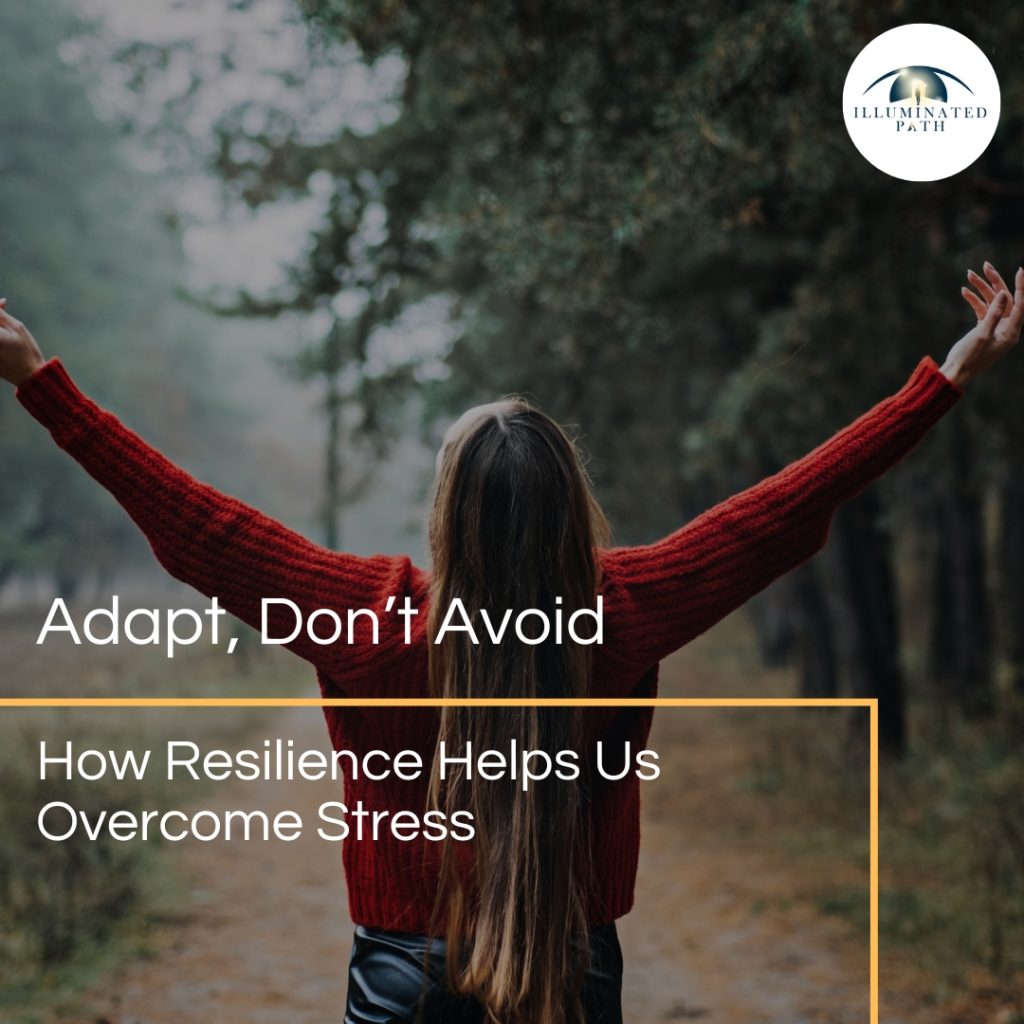
Introduction: Why Resilience Matters Now More Than Ever Whether it’s the pressure of deadlines, a strained relationship, or the weight of global uncertainty, stress touches every corner of modern life. But while we can’t always control our circumstances, we can change how we respond to them. That’s where resilience comes in. More than just “toughing it out,” true resilience is about learning to adapt — not avoid — in the face of adversity. In this post, we’ll explore how resilience helps us overcome stress, why avoidance backfires, and how you can start building the adaptive habits that strengthen you from the inside out. What Is Resilience? (And What It Isn’t) Resilience is often misunderstood. It’s not about having a stiff upper lip or bouncing back instantly from hardship. Psychologists define resilience as the capacity to recover from difficulties through adaptation and growth. What resilience is not: Suppressing your feelings Pretending everything is fine Avoiding hard conversations or decisions Instead, resilience involves acknowledging discomfort and then choosing to engage with it in a way that promotes healing and forward movement. Resilience is built through adaptation — not avoidance. The Science Behind Resilience and Stress When we experience stress, our bodies activate the fight-or-flight response: our heart rate increases, cortisol floods our system, and we prepare to either confront or escape the threat. But when stress is chronic, or when we avoid addressing its sources, this system goes into overdrive — draining our energy and affecting both physical and mental health. Here’s the good news: resilience is not fixed. Thanks to neuroplasticity, our brains can learn to respond more effectively over time. Studies show that people who cultivate adaptive responses — like reframing thoughts or seeking support — experience: Lower levels of anxiety and depression Greater problem-solving ability Better overall health outcomes Avoidance vs. Adaptation: Why Avoiding Stress Makes It Worse Avoidance might feel good in the short term, but it often leads to more suffering in the long run. Common Avoidance Strategies: Procrastinating important tasks Withdrawing from others Distracting yourself with food, screens, or substances Pretending “everything is fine” These behaviors might provide temporary relief, but they delay growth and allow problems to fester. Adaptive Responses (What Resilience Looks Like): Facing stressors head-on with curiosity and calm Accepting what’s outside of your control Taking meaningful action, even when it’s uncomfortable Resilience means recognizing that challenges won’t vanish if you ignore them. Instead, growth comes from learning how to face them. How to Build Resilience Through Adaptation: 5 Proven Strategies 1. Embrace Discomfort as a Growth Zone Stepping into discomfort — in small, manageable ways — helps your nervous system learn that difficulty isn’t danger. Try a new habit, tackle a hard task, or have that honest conversation you’ve been avoiding. 2. Practice Cognitive Flexibility Resilient people know how to reframe their thoughts. Instead of thinking “I can’t handle this,” ask “What can I learn from this?” Flexibility in thinking helps reduce rumination and opens space for solutions. 3. Strengthen Social Connections Human beings are wired for connection. Talking to a friend, mentor, or support group about your challenges can build resilience faster than facing stress alone. 4. Cultivate Emotional Awareness Mindfulness, journaling, and therapy help us name our emotions — a key part of emotional regulation. The more self-aware you are, the easier it becomes to adapt rather than react. 5. Commit to Purposeful Action Purpose gives us direction. Whether it’s work, family, or a cause, having a sense of meaning helps us persist through hardship. Resilience grows when you act in line with your values, even when it’s tough. When to Seek Help: Resilience Includes Knowing Your Limits Resilience doesn’t mean “go it alone.” Knowing when to reach out — to a therapist, counselor, or support group — is a powerful act of adaptation. If you’re feeling overwhelmed, anxious, or stuck in cycles of avoidance, professional help can guide you toward healthier responses. Conclusion: Choose Adaptation Over Avoidance Stress is inevitable — but suffering doesn’t have to be. The difference lies in how we respond. By choosing adaptation over avoidance, we build resilience that lasts. Not by pretending stress isn’t there, but by leaning into it with the tools, support, and mindset that help us grow stronger. You don’t have to bounce back — you just have to move forward. The Author Dr. Shadi Souferian Psy. D. Licensed Clinical Psychologist Therapist And Psychologist in Los Angeles And Beverly Hills. You might also enjoy this article: How Resilience Helps Us Overcome Stress: Adapt, Don’t Avoid April 15, 2025Personal Development Introduction: Why Resilience Matters Now More Than Ever Whether it’s the pressure of deadlines, a…Read more Beyond Words: Why True Empathic Listening is the Cornerstone of a Powerful Relationship March 26, 2025Relationship In the intricate dance of human connection, particularly within the intimate sphere of a romantic…Read more When the Smoke Detector Never Stops Beeping: Understanding and Addressing Chronic Anxiety March 18, 2025Personal DevelopmentTrauma Daniel Goleman, the renowned expert on emotional intelligence, offered a potent analogy for understanding anxiety:…Read more The Silent Crisis: Parental Burnout and Hidden Stress in Modern Families March 11, 2025Parenting Modern parenting is often depicted as a journey filled with immense joy and profound love,…Read more Designing a Healing Space: How Environment Impacts Mental Health March 4, 2025Therapy Room The spaces we inhabit are not passive backdrops to our lives—they actively shape our emotions,…Read more Beyond the Flames: Understanding the Long-Term Impact of Wildfire Trauma on LA Communities February 26, 2025Trauma The iconic image of Los Angeles is often one of sunshine, beaches, and Hollywood glamour.…Read more
When the Smoke Detector Never Stops Beeping: Understanding and Addressing Chronic Anxiety
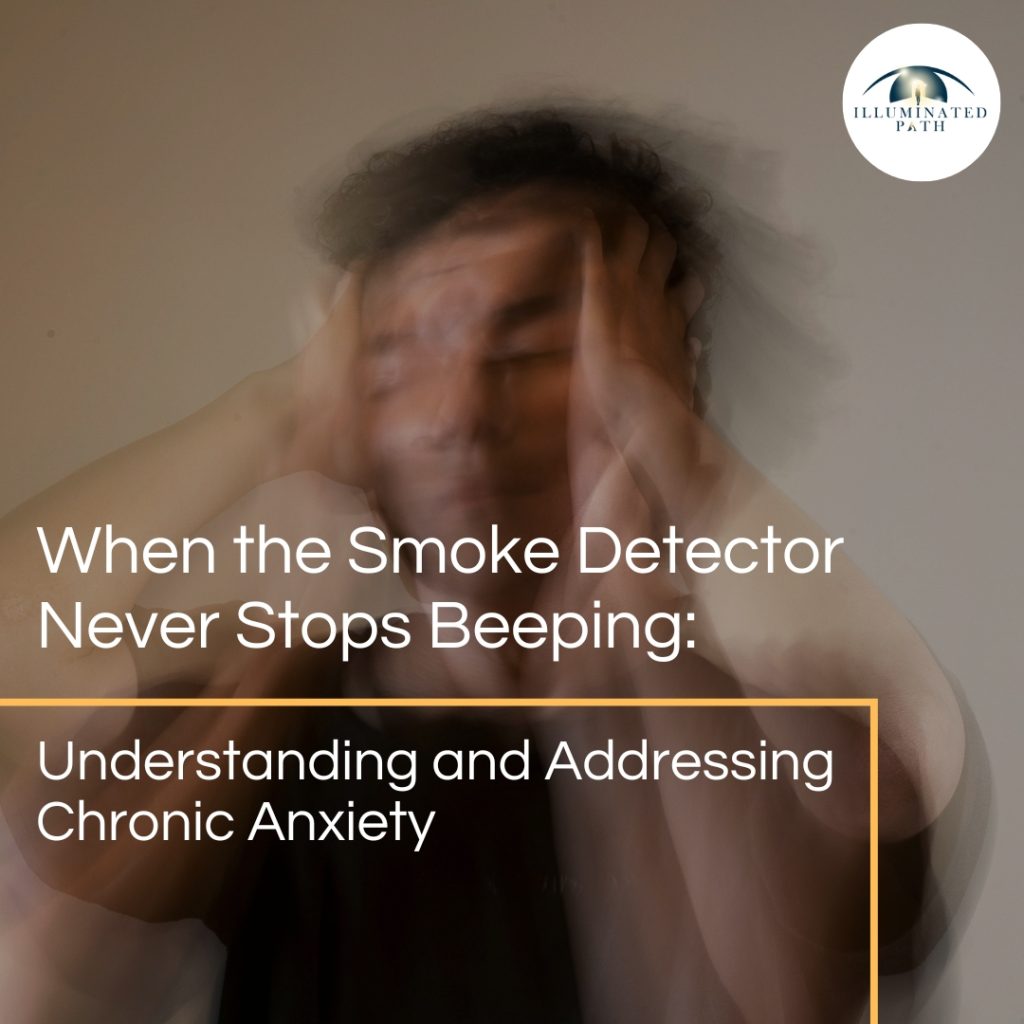
Daniel Goleman, the renowned expert on emotional intelligence, offered a potent analogy for understanding anxiety: “Anxiety is the mind’s smoke detector – sometimes it warns of real danger, often it’s just burnt toast. Learn to tell the difference.” This simple yet profound statement encapsulates a crucial aspect of navigating our inner world. However, what happens when the smoke detector malfunctions, relentlessly blaring even in the absence of smoke, or worse, when the “burnt toast” triggers a full-blown, ear-splitting alarm? This is the realm of chronic anxiety, a persistent and often debilitating condition that extends far beyond occasional worries or fleeting moments of unease. For those living with chronic anxiety, Goleman’s wisdom, while insightful, can feel like a distant shore. The constant barrage of anxious thoughts, physical sensations, and anticipatory dread makes it incredibly difficult to discern between genuine threats and the mind’s overactive imagination. The smoke detector, meant to be a helpful guardian, becomes a tyrannical overlord, dictating every thought and action, casting a long shadow over daily life. This article delves into the multifaceted nature of chronic anxiety, exploring its profound impact, the critical juncture where professional help becomes essential, potential underlying causes, effective treatment options, and ultimately, how to begin the journey of quieting the incessant alarm and learning to distinguish genuine danger from internal noise. The Unrelenting Symphony of Chronic Anxiety: A Life Lived on High Alert Chronic anxiety isn’t merely feeling a bit worried before a presentation or experiencing pre-exam jitters. It’s a pervasive state of apprehension and unease that lingers for extended periods, often months or even years. It’s a constant hum of worry in the background, occasionally escalating into full-blown panic attacks, but always present in some form. This persistent state of hyperarousal can manifest in a myriad of ways, impacting virtually every facet of an individual’s life: Cognitive Landscape: The mind becomes a breeding ground for intrusive thoughts, often negative, catastrophic, or repetitive. Worry becomes a default mode, with individuals constantly scanning for potential threats, real or imagined. Decision-making becomes fraught with difficulty, as every option is weighed against potential negative outcomes. Concentration and focus dwindle, making even simple tasks feel monumental. Memory can also be affected by the constant mental chatter. Emotional Turmoil: Beyond worry, chronic anxiety can fuel a range of negative emotions, including fear, irritability, restlessness, and a sense of being overwhelmed. Individuals may experience a persistent feeling of being “on edge,” unable to relax or find peace of mind. This emotional exhaustion can lead to feelings of sadness, hopelessness, and even contribute to the development of depression. Physical Manifestations: The mind-body connection is undeniable, and chronic anxiety takes a significant toll on physical health. Common symptoms include muscle tension, headaches, stomachaches, digestive issues (like irritable bowel syndrome), fatigue, sleep disturbances (insomnia, restless sleep), rapid heartbeat, sweating, and shortness of breath. These physical symptoms can be distressing in themselves, often exacerbating the underlying anxiety and creating a vicious cycle. Behavioral Adaptations: To cope with the relentless anxiety, individuals may develop avoidance behaviors. They might start avoiding social situations, work responsibilities, or even everyday activities that trigger their anxiety. This avoidance, while providing temporary relief, ultimately limits their lives, shrinks their world, and reinforces the anxiety. Other maladaptive coping mechanisms, such as excessive reassurance seeking, procrastination, or engaging in rituals, may also emerge. Impact on Relationships: Chronic anxiety can strain interpersonal relationships. Irritability, difficulty relaxing and enjoying time together, and avoidance behaviors can lead to misunderstandings and conflict. Loved ones may struggle to understand the intensity of the anxiety and may feel helpless or frustrated. The cumulative effect of these symptoms can be profoundly debilitating. Individuals with chronic anxiety may find it difficult to perform at work or school, maintain healthy relationships, pursue their hobbies, or simply enjoy life. The constant internal struggle can lead to feelings of isolation, shame, and a diminished sense of self-worth. When the Alarm Bells Demand Attention: Recognizing the Need for Professional Help While everyone experiences anxiety to some degree, chronic anxiety is qualitatively and quantitatively different. It’s not something that can be simply “willed away” or overcome with positive thinking alone. Recognizing when the “smoke detector” is malfunctioning to the point of requiring professional intervention is a crucial step towards recovery. Here are some key indicators that suggest it’s time to seek help: Persistence and Intensity: The anxiety is persistent, lasting for several months or longer, and its intensity significantly interferes with daily functioning. Impairment of Daily Life: Anxiety makes it difficult to perform everyday tasks at work, school, or home. It impacts concentration, productivity, and overall performance. Relationship Strain: Anxiety is negatively affecting relationships with family, friends, or romantic partners, leading to conflict, avoidance, or isolation. Physical Symptoms: Physical symptoms associated with anxiety are frequent, severe, and causing significant discomfort or concern. Avoidance Behaviors: You find yourself increasingly avoiding situations or activities that trigger anxiety, leading to a restricted lifestyle. Difficulty Controlling Worry: You feel overwhelmed by your worries and find it difficult to control or stop the flow of anxious thoughts. Panic Attacks: You experience recurrent panic attacks – sudden episodes of intense fear accompanied by physical symptoms like rapid heartbeat, dizziness, and shortness of breath. Co-occurring Conditions: You suspect or have been diagnosed with other mental health conditions, such as depression or substance use disorders, which often co-occur with anxiety. Decreased Quality of Life: Overall, your anxiety is significantly impacting your enjoyment of life, your sense of well-being, and your ability to pursue your goals. Acknowledging the need for help is not a sign of weakness but rather an act of self-awareness and strength. Chronic anxiety is a treatable condition, and seeking professional support is the first step towards regaining control and silencing the incessant alarm. Unraveling the Roots: Exploring Potential Underlying Causes of Chronic Anxiety The development of chronic anxiety is rarely attributable to a single cause. Instead, it typically arises from a complex interplay of genetic, biological, psychological, and environmental factors. Understanding these potential contributing factors can
Breaking Free from Anxiety: A Path to Well-being
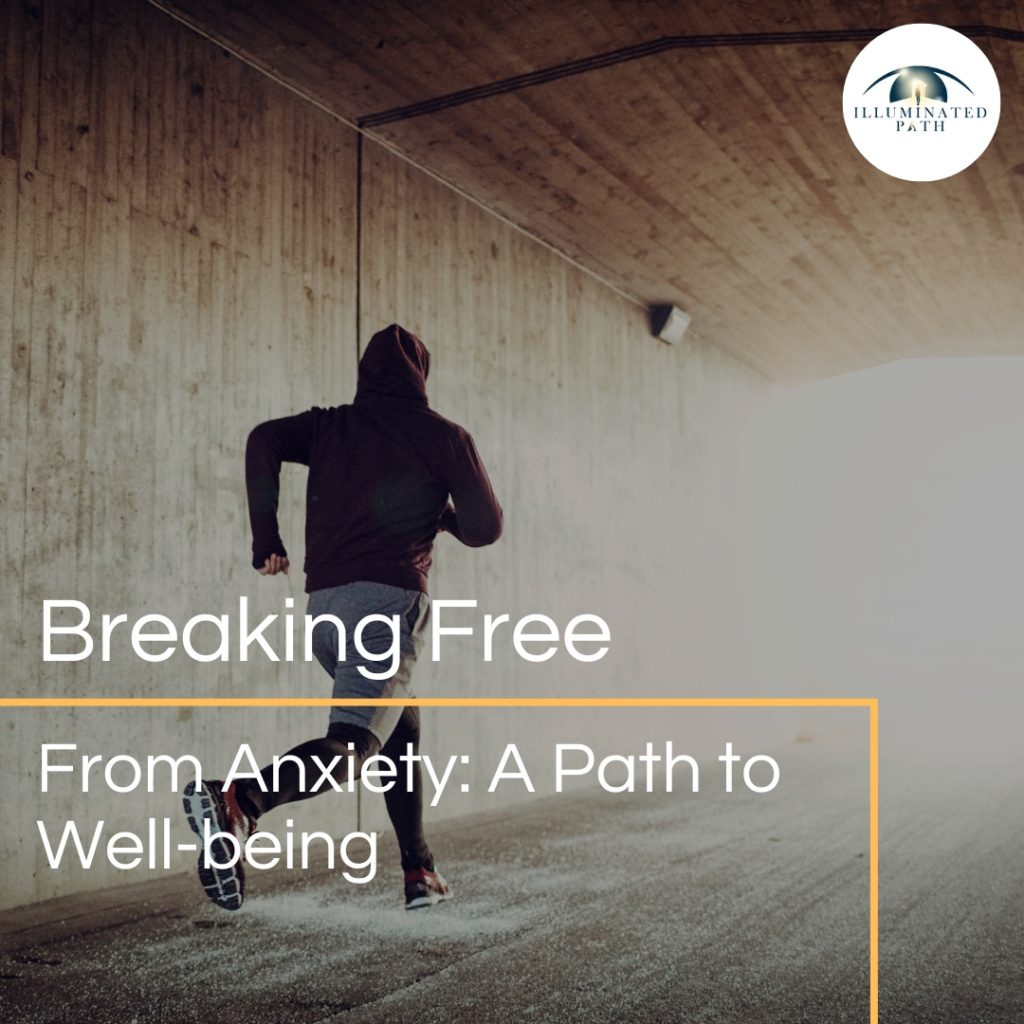
Anxiety. It’s a word that’s become increasingly commonplace in our everyday conversations, a feeling that many of us know all too well. But what exactly is anxiety, and how can we distinguish between the normal anxieties of life and a disorder that requires attention? At its core, anxiety is a natural human response to stress or perceived threat. It’s that feeling of unease, worry, or fear that we experience when faced with a challenging situation. In moderate amounts, anxiety can be beneficial, motivating us to take action and prepare for challenges. However, when anxiety becomes excessive, persistent, and interferes with our daily lives, it can signal an anxiety disorder. The Prevalence of Anxiety Disorders: A Global Concern Anxiety disorders are among the most common mental health conditions worldwide. According to the World Health Organization (WHO), an estimated 301 million people globally were living with an anxiety disorder in 2019, with women being disproportionately affected. (Source: WHO, Mental Health in a world of inequality: Report. 2021.) This number has likely risen since the COVID-19 pandemic, which introduced new stressors and uncertainties into people’s lives. In the United States, data from the National Institute of Mental Health (NIMH) reveals that an estimated 19.1% of U.S. adults experienced an anxiety disorder in any given year. (Source: NIMH, Anxiety Disorders. 2023). This highlights the significant impact of anxiety on individuals, families, and communities. These disorders manifest in various forms, including Generalized Anxiety Disorder (GAD), characterized by excessive worry about everyday events; Panic Disorder, involving recurrent panic attacks; Social Anxiety Disorder (SAD), marked by intense fear of social situations; Specific Phobias, involving fear of specific objects or situations; and Separation Anxiety Disorder, characterized by anxiety about separation from loved ones. Understanding the Roots of Anxiety Anxiety disorders are complex, and their development is influenced by a combination of factors. Genetics can play a role, with research suggesting that anxiety disorders can run in families. Brain chemistry imbalances, particularly in neurotransmitters like serotonin and norepinephrine, can also contribute. Life experiences, such as traumatic events or stressful circumstances, can trigger or worsen anxiety. Additionally, learned behaviors and personality traits, like neuroticism and perfectionism, can increase vulnerability. Recognizing the Symptoms Anxiety manifests in diverse ways, affecting individuals physically, emotionally, and behaviorally. Physical symptoms may include a rapid heartbeat, sweating, trembling, shortness of breath, muscle tension, headaches, fatigue, and sleep disturbances. Emotionally, anxiety can manifest as excessive worry, restlessness, irritability, feeling overwhelmed, fear of losing control, and difficulty concentrating. Behaviorally, it can lead to avoidance of situations, procrastination, social withdrawal, restlessness, and difficulty with daily tasks. The Impact of Anxiety on Daily Life Anxiety disorders can significantly impact an individual’s quality of life. They can strain relationships, leading to conflict and isolation. Anxiety can also impair concentration and productivity, affecting work or school performance. Chronic anxiety can contribute to physical health problems, including cardiovascular disease and digestive issues. Socially, anxiety can lead to withdrawal and difficulty engaging in activities. Seeking Help and Managing Anxiety The good news is that anxiety disorders are treatable. Effective options include psychotherapy, such as Cognitive Behavioral Therapy (CBT), which helps individuals identify and change negative thought patterns and behaviors. Medication, including antidepressants and anti-anxiety drugs, can also be helpful. Lifestyle changes, like regular exercise, a healthy diet, and sufficient sleep, can contribute to anxiety reduction. Mindfulness and relaxation techniques, such as meditation, deep breathing, and yoga, can promote calmness and reduce anxiety. The Importance of Anxiety Awareness Raising awareness about anxiety disorders is crucial for several reasons. It helps reduce stigma, encouraging people to seek help without shame. Early intervention is key to preventing anxiety from becoming chronic, and awareness promotes mental health literacy, empowering individuals to recognize symptoms. Creating supportive environments in families, schools, and workplaces can help individuals with anxiety feel safe and understood. Anxiety is a common human experience, but it doesn’t have to control your life. With awareness, understanding, and appropriate support, you can learn to manage anxiety and live a fulfilling life. The Author Dr. Shadi Souferian Psy. D. Licensed Clinical Psychologist Therapist And Psychologist in Los Angeles And Beverly Hills. You might also enjoy this article: Breaking Free from Anxiety: A Path to Well-being February 10, 2025Personal DevelopmentTrauma Parenting is often described as one of the most rewarding and challenging roles in life.…Read more Energy Psychology: Bridging Ancient Wisdom and Modern Science for Holistic Healing February 5, 2025Personal Development The Rising Demand for Alternative Mental Health Solutions Mental health disorders affect over 970 million…Read more Finding the Way Back to Connection: How Therapy Fosters Deeper Relationships With Self and Others January 29, 2025Life TransformationRelationship “In therapy, we are trying to help people feel more connected to themselves and others.”…Read more Healing Hearts, Building Bridges: Nurturing Relationships After Trauma January 23, 2025Trauma Trauma, whether a singular event or a series of ongoing experiences, can leave deep scars…Read more The Power of Cogmed : Unlocking Better Cognitive and Noncognitive Outcomes for Children January 10, 2025Parenting Working memory (WM) is a cornerstone of cognitive functioning, allowing individuals to temporarily hold and…Read more Bridging the Gap: Navigating Parenting Style Differences in Blended Families January 6, 2025Parenting Blended families are on the rise, with an estimated 16% of U.S. children living in…Read more
Energy Psychology: Bridging Ancient Wisdom and Modern Science for Holistic Healing
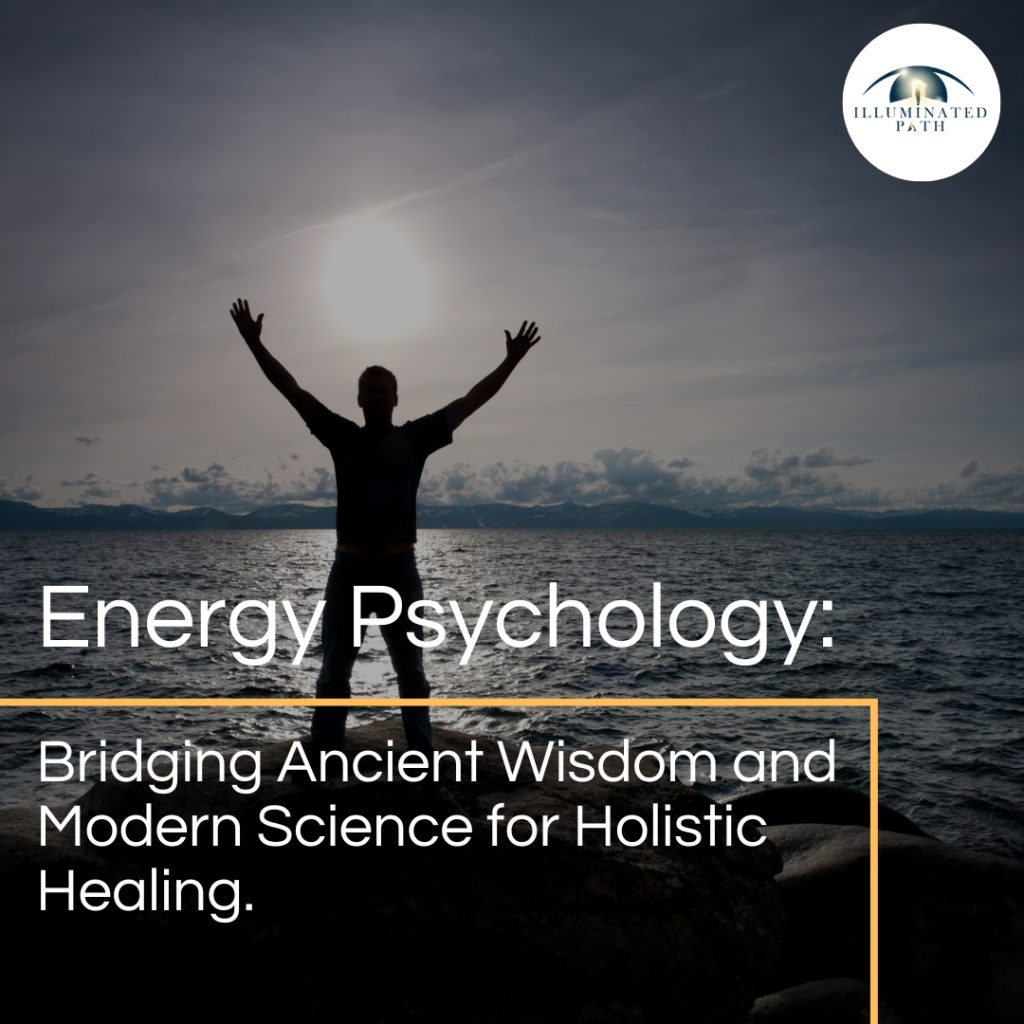
The Rising Demand for Alternative Mental Health Solutions Mental health disorders affect over 970 million people globally, according to the World Health Organization (2022), with anxiety and depression alone costing the global economy an estimated $1 trillion annually in lost productivity. Despite the widespread use of traditional therapies like cognitive behavioral therapy (CBT) and pharmaceuticals, up to 50% of patients experience limited relief or relapse, as noted by the American Psychological Association (2021). This gap in effective treatment has spurred growing interest in integrative approaches, including energy psychology (EP)—a practice that merges cognitive techniques with interventions targeting the body’s subtle energy systems. Offering accessible and non-invasive tools for emotional well-being, EP has gained significant traction in recent years. By 2023, a National Institutes of Health (NIH) survey found that 1 in 5 Americans had tried energy-based therapies like Emotional Freedom Techniques (EFT) for mental wellness. This article delves into the principles, scientific evidence, applications, and debates surrounding energy psychology, offering a comprehensive exploration of its role in modern mental health care. What Is Energy Psychology? Energy psychology is rooted in the idea that disruptions in the body’s biofields—subtle energy systems such as meridians (from Traditional Chinese Medicine) or chakras (from Ayurvedic traditions)—correlate with psychological and physical ailments. By modulating these energy systems, practitioners aim to alleviate emotional distress and promote healing. Modern EP techniques include Emotional Freedom Techniques (EFT), which involves tapping on acupuncture points while focusing on negative emotions; Thought Field Therapy (TFT), which uses algorithm-based tapping sequences to neutralize trauma; and HeartMath, a practice that regulates heart rhythms to improve emotional coherence. At its core, energy psychology operates on three principles: Energy Systems Influence Mental Health: The body’s energy pathways are seen as conduits for emotional and physical well-being. Mind-Body Connection: Psychological trauma is believed to manifest as blockages or imbalances in these energy systems. Rapid Intervention: EP often claims to achieve faster results than traditional talk therapies, with some techniques requiring just minutes to reduce acute stress. Scientific Evidence: What Does the Data Say? The efficacy of energy psychology has been a subject of both enthusiasm and skepticism. Clinical studies, however, are increasingly validating its potential. For example, a 2022 meta-analysis published in the Journal of Nervous and Mental Disease reviewed 56 studies on EFT and found that the technique reduced anxiety symptoms by 40–60% within 4–10 sessions—a result comparable to CBT. Similarly, a randomized trial in the Energy Psychology Journal (2021) demonstrated that EFT decreased depression scores by 39%, compared to a 17% reduction in control groups. Neurological research has also begun to uncover mechanisms behind EP’s effects. Functional MRI studies reveal that EFT significantly reduces hyperactivity in the amygdala, the brain’s fear center, by approximately 25% post-treatment (Frontiers in Psychology, 2021). HeartMath techniques, which focus on heart rhythm coherence, have been shown to increase heart rate variability (HRV)—a biomarker of emotional resilience—by 20–30% (American Journal of Cardiology). Critics, however, argue that EP’s benefits may stem from placebo effects, general relaxation, the therapeutic alliance, or the power of focused attention, rather than energy modulation alone. A 2022 review in Skeptical Inquirer emphasized the need for more rigorous, long-term studies, as most research tracks outcomes for less than a year. Applications in Modern Mental Health Energy psychology’s versatility has led to its adoption in diverse settings. In trauma recovery, for instance, veterans with PTSD experienced a 58% reduction in symptoms after six EFT sessions, according to a 2023 study in the Journal of Military Medicine. The Association for Comprehensive Energy Psychology (ACEP) now trains clinicians in EP techniques specifically for trauma treatment. In corporate wellness programs, companies like Google have integrated HeartMath into their “Search Inside Yourself” curriculum, reporting a 32% drop in employee stress levels. EP is also gaining traction in chronic illness care: a 2021 study in Cancer Care found that 41% of oncology patients using energy psychology reported improved coping skills during chemotherapy. Furthermore, many individuals are exploring EP techniques for self-help and personal growth, utilizing resources like books, online courses, and workshops. Case Studies: Real-World Impact The transformative potential of energy psychology is illustrated through individual stories. In one case, a 35-year-old woman with debilitating social anxiety stemming from childhood bullying used EFT for eight weeks, reducing her Liebowitz Anxiety Scale score from 84 to 42—a threshold indicating clinical remission. Another example involves a veteran with combat-related PTSD who participated in a VA Hospital study using Thought Field Therapy; after six sessions, he experienced a 70% decrease in flashbacks and hypervigilance. Ethical Considerations and Training As energy psychology grows in popularity, ethical concerns around practitioner training and evidence-based integration have emerged. Reputable organizations like ACEP require practitioners to complete 200+ hours of specialized training, ensuring adherence to clinical standards. Notably, 14% of U.S. mental health clinics now combine EP with CBT, according to a 2023 Psychology Today report, reflecting its gradual acceptance into mainstream care. Criticisms and the Path Forward Skeptics often dismiss energy psychology as pseudoscience, citing its reliance on concepts like “biofields,” which lack empirical measurement. However, institutions like the American Psychological Association have begun recognizing EFT as an “emerging treatment” for trauma, signaling a shift toward openness. Future research must address gaps in long-term efficacy data and standardize protocols to strengthen EP’s credibility. A New Frontier in Integrative Care Energy psychology represents a compelling fusion of ancient wisdom and modern neuroscience, offering accessible, low-cost tools for mental health. With growing evidence of its efficacy and 68% of users reporting satisfaction in NIH surveys, its potential to complement traditional therapies is undeniable. By addressing the interconnectedness of mind, body, and emotions, EP offers a holistic approach to healing and well-being. As research evolves, energy psychology may play a pivotal role in addressing the global mental health crisis, bridging the gap between mind, body, and spirit in ways that resonate with our understanding of well-being. The Author Dr. Shadi Souferian Psy. D. Licensed Clinical Psychologist Therapist And Psychologist in Los Angeles And Beverly Hills.
How Cogmed Therapy Addresses Client Pain Points

In our increasingly demanding and dynamic world, working memory is more critical than ever. It governs our ability to retain and manipulate information, stay focused, and perform everyday tasks efficiently. For many, though, challenges with working memory manifest as difficulty concentrating, staying organized, or learning new information. These pain points often cause frustration, diminished confidence, and underachievement in both personal and professional life. Cogmed therapy emerges as a beacon of hope for individuals grappling with these challenges. Designed to improve working memory through targeted cognitive training, it has helped countless individuals unlock their potential. This article dives deep into the pain points faced by those with working memory difficulties and how Cogmed therapy offers a path forward. The Importance of Working Memory: The Numbers Speak Working memory is like a mental workspace—it allows us to hold and manipulate information over short periods. Whether you’re solving a math problem, following a conversation, or navigating a new city with GPS, working memory is at play. Statistics Highlighting the Challenge: ADHD and Working Memory Deficits: Research shows that 85% of individuals with ADHD experience significant working memory impairments. (Source: Martinussen et al., 2005, Journal of the American Academy of Child & Adolescent Psychiatry) Impact on Academic Achievement: A longitudinal study found that working memory capacity in early childhood predicts 50% of variance in academic achievement in reading and math by adolescence. (Source: Gathercole et al., 2004, Developmental Psychology) Age-Related Decline: Working memory capacity begins to decline around the age of 30, with significant reductions by age 60. This decline correlates with difficulties in multitasking and decision-making. (Source: Salthouse, 1994, Psychological Science) These statistics underscore the widespread and impactful nature of working memory deficits, affecting individuals across all stages of life. Pain Points of Clients Seeking Solutions For individuals and families dealing with working memory deficits, the journey to finding effective solutions can be fraught with challenges: Overwhelming Choices: The cognitive health market is flooded with tools and apps claiming to boost memory and focus, leaving clients unsure where to turn. Skepticism and Fatigue: After trying multiple ineffective solutions, many are skeptical about new approaches. Time and Commitment: Busy schedules make it hard to commit to therapies that require significant time and effort. Lack of Support: The absence of personalized guidance or feedback often leads to frustration and abandonment of programs. How Cogmed Therapy Solves Client Pain Points Cogmed therapy is not just another brain-training app; it’s a scientifically validated program tailored to individual needs. Let’s explore how it tackles the pain points head-on: 1. Evidence-Based Approach Many cognitive training programs make lofty claims without substantial proof. Cogmed therapy stands apart, rooted in research that demonstrates its efficacy in enhancing working memory. Supporting Data: A meta-analysis of 17 studies found that Cogmed significantly improved working memory capacity, with lasting effects up to six months post-intervention. (Source: Spencer-Smith & Klingberg, 2015, Journal of Clinical Psychology) 2. Personalized Training for Lasting Impact One-size-fits-all solutions rarely work for cognitive challenges. Cogmed therapy customizes its training exercises to match each individual’s starting ability, gradually increasing the complexity as they improve. This adaptive approach ensures participants are consistently challenged without feeling overwhelmed, leading to sustained progress. 3. Guided by Experts A key differentiator of Cogmed therapy is the involvement of a trained coach. This professional provides ongoing support, monitors progress, and adjusts the program as needed. Supporting Data: Studies show that personalized coaching improves adherence rates by 40% compared to unguided cognitive training programs. (Source: Holmes et al., 2009, Applied Cognitive Psychology) 4. Flexible and Convenient Cogmed therapy is designed to fit seamlessly into busy lives. Sessions are conducted on a computer or tablet and typically last 25–50 minutes. Most programs require just 5–10 weeks of commitment, making it manageable for even the busiest individuals. 5. Immediate and Long-Term Benefits Clients often report noticeable improvements in focus, attention, and organization within weeks. Over time, these gains translate into better academic performance, enhanced professional efficiency, and improved quality of life. Supporting Data: A study reported that 80% of participants experienced improved attention and focus after completing the Cogmed program. (Source: Egeland et al., 2013, Journal of Child Psychology and Psychiatry) Real-Life Transformations with Cogmed Therapy Case Study 1: Sarah, a High School Student with ADHD Sarah struggled to keep up in school. She often forgot homework assignments, zoned out during lectures, and felt overwhelmed by exams. Her parents worried about her declining grades and self-esteem. After enrolling in Cogmed therapy, Sarah’s focus and organization improved significantly. She began completing assignments on time, participating in class, and even enjoying learning again. Her newfound confidence extended beyond academics, improving her relationships and overall happiness. Case Study 2: Mark, a Professional Facing Cognitive Overload Mark, a marketing executive, found it increasingly difficult to juggle multiple projects. Forgetting deadlines and missing details during meetings were becoming routine, threatening his career. Through Cogmed therapy, Mark regained control. His enhanced working memory helped him manage tasks more effectively, stay focused during meetings, and meet deadlines with ease. With his confidence restored, Mark felt like himself again. Case Study 3: Maria, a Senior Navigating Age-Related Decline Maria noticed she was forgetting grocery lists, misplacing items, and struggling to follow conversations. Fearing cognitive decline, she sought solutions to stay sharp. Cogmed therapy provided Maria with a structured way to train her mind. Over several weeks, she noticed improvements in her memory and focus. The program not only alleviated her fears but also empowered her to stay active and independent. Frequently Asked Questions About Cogmed Therapy Q: Who is Cogmed therapy for? A: Cogmed is ideal for individuals with ADHD, learning disabilities, brain injuries, or age-related cognitive decline. It also benefits those who simply want to enhance their working memory. Q: Does it really work? A: While results vary, many studies support Cogmed’s effectiveness in improving working memory. Real-world benefits often extend to focus, learning, and daily functioning. Q: Is it suitable for children? A: Yes, Cogmed therapy offers versions tailored for children, adolescents, and adults, ensuring age-appropriate
Facing Our Truths: The Power of Vulnerability and Authenticity
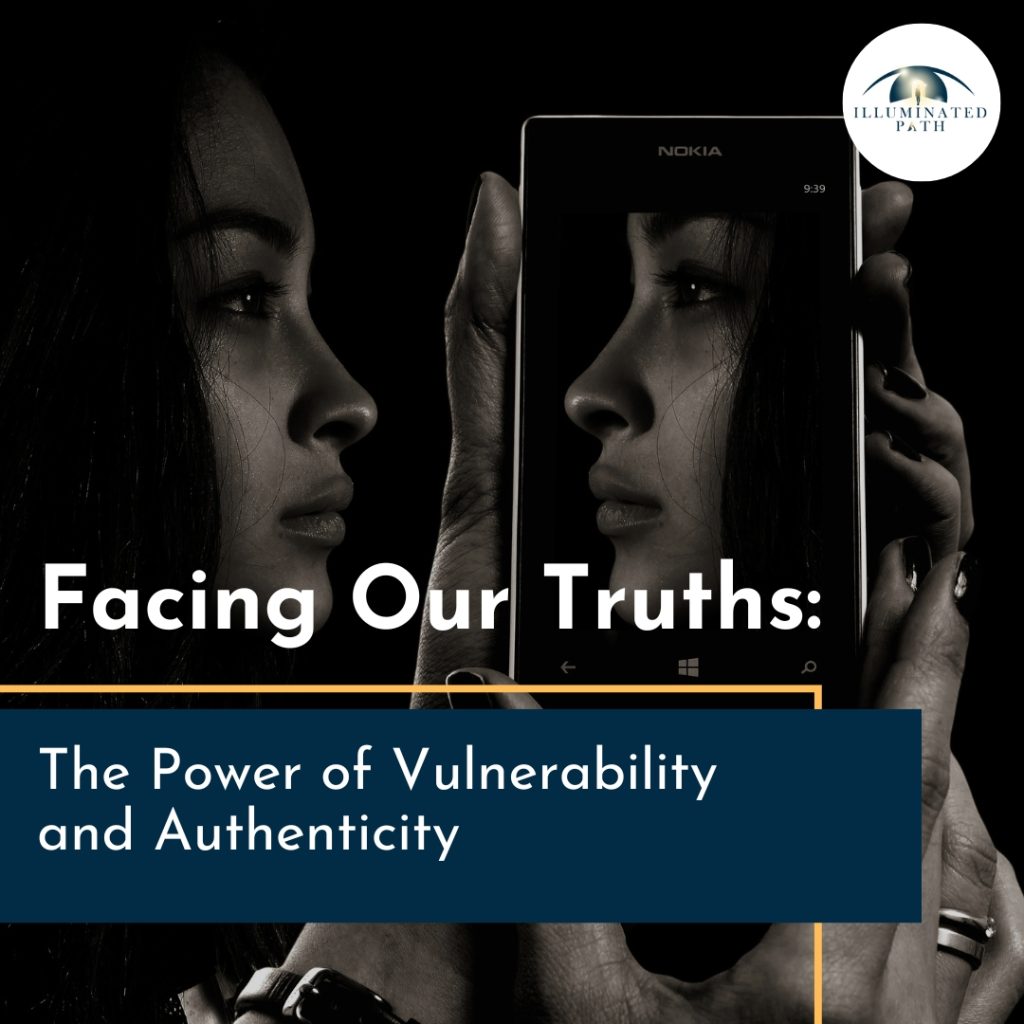
“Owning our story can be hard but not nearly as difficult as spending our lives running from it. Embracing 1 our vulnerabilities is risky but not nearly as dangerous as giving up on love and belonging and joy—the experiences that make us the most vulnerable.” This powerful quote by Brené Brown, renowned researcher and author, speaks to the transformative potential of vulnerability and authenticity in our lives. While facing our past and embracing our vulnerabilities may seem daunting, it’s a necessary step for personal growth and meaningful connection. In fact, a study by the American Psychological Association found that individuals who avoid vulnerability are 3 times more likely to experience social isolation and loneliness. Running from our story, hiding our true selves, and suppressing our emotions ultimately leads to a sense of unworthiness. The Benefits of Vulnerability: Deeper Connections: Vulnerability allows us to connect with others on a deeper level, fostering trust, intimacy, and genuine understanding. It creates a safe space for sharing our true selves and receiving acceptance and support. A study published in the Journal of Personality and Social Psychology found that individuals who practice vulnerability in their close relationships experience greater intimacy, trust, and overall relationship satisfaction. Increased Self-Awareness: By acknowledging and embracing our vulnerabilities, we gain a deeper understanding of our thoughts, feelings, and needs. This self-awareness empowers us to make conscious choices and live more authentically. Studies have shown that embracing vulnerability can lead to increased self-esteem, reduced anxiety, and improved emotional regulation. Enhanced Resilience: Vulnerability fosters resilience by allowing us to learn from our experiences, overcome challenges, and bounce back from setbacks. It teaches us to accept ourselves, flaws and all, and navigate life with courage and grace. Greater Joy and Fulfillment: By embracing our vulnerabilities, we open ourselves up to the possibility of experiencing greater joy, love, and belonging. It allows us to connect with others authentically, build meaningful relationships, and live a life filled with purpose and passion. Brené Brown’s research indicates that people who embrace vulnerability are also more likely to experience feelings of joy, belonging, and courage. Embracing Vulnerability in Our Lives: While vulnerability may not always be comfortable, it’s a crucial skill to cultivate for a fulfilling life. Here are some ways to embrace vulnerability in your own life: Start small: Begin by sharing your thoughts and feelings with trusted friends, family members, or a therapist. Practice self-compassion: Be kind and understanding towards yourself, even when you make mistakes or feel vulnerable. Communicate openly and honestly: Express your true feelings and needs in a respectful and assertive way. Be willing to listen: Pay attention to what others are saying and try to understand their perspective. Accept that vulnerability is a risk: There is always a chance that you might be hurt or rejected, but the rewards of vulnerability far outweigh the risks. While vulnerability can be scary, research shows that the majority of those who take the risk report positive outcomes, such as stronger relationships and increased self-awareness. Living a Life of Authenticity: By embracing vulnerability and living authentically, we open ourselves up to a world of possibilities. We connect with others on a deeper level, experience greater joy and fulfillment, and live a life that is true to ourselves. Remember, the courage to be vulnerable is not the absence of fear, but the willingness to move forward despite it. So, take a deep breath, find your voice, and let your true self shine through. The Author Dr. Shadi Souferian Psy. D. Licensed Clinical Psychologist Therapist And Psychologist in Los Angeles And Beverly Hills. You might also enjoy this article: Facing Our Truths: The Power of Vulnerability and Authenticity November 21, 2024By:Dr. Shadi Souferian, Psy.DPersonal DevelopmentCouple RelationshipHealthy Relationships0Comments Stress. The word itself can evoke a visceral reaction, conjuring images of deadlines, overflowing inboxes,…Read more The Symphony of Stress: Understanding and Navigating the Body’s Alarm System November 18, 2024By:Dr. Shadi Souferian, Psy.DUncategorized0Comments Stress. The word itself can evoke a visceral reaction, conjuring images of deadlines, overflowing inboxes,…Read more The Key to a Happy Relationship: It’s All About Repair, Not the Absence of Conflict November 15, 2024By:Dr. Shadi Souferian, Psy.DRelationshipCouple RelationshipHealthy Relationships0Comments In the world of relationships, conflict is inevitable. Even the happiest couples argue, but what…Read more Finding Peace in the Present: Letting Go of “Should” and Managing Stress October 28, 2024By:Dr. Shadi Souferian, Psy.DPersonal DevelopmentStress Management0Comments our struggle to accept reality as it is often lies at the root of our…Read more Embracing Imperfection: A Path to Empathy and Acceptance October 17, 2024By:Dr. Shadi Souferian, Psy.DRelationshipCouple RelationshipMarriage0Comments Imperfection is a universal human experience. Yet, many of us strive for unattainable standards of…Read more Relationship Roadblocks? Your Attachment Style Might Be the Key October 10, 2024By:Dr. Shadi Souferian, Psy.DRelationshipCouple RelationshipMarriage0Comments Do you ever find yourself wondering why you react the way you do in relationships?…Read more
Finding Peace in the Present: Letting Go of “Should” and Managing Stress
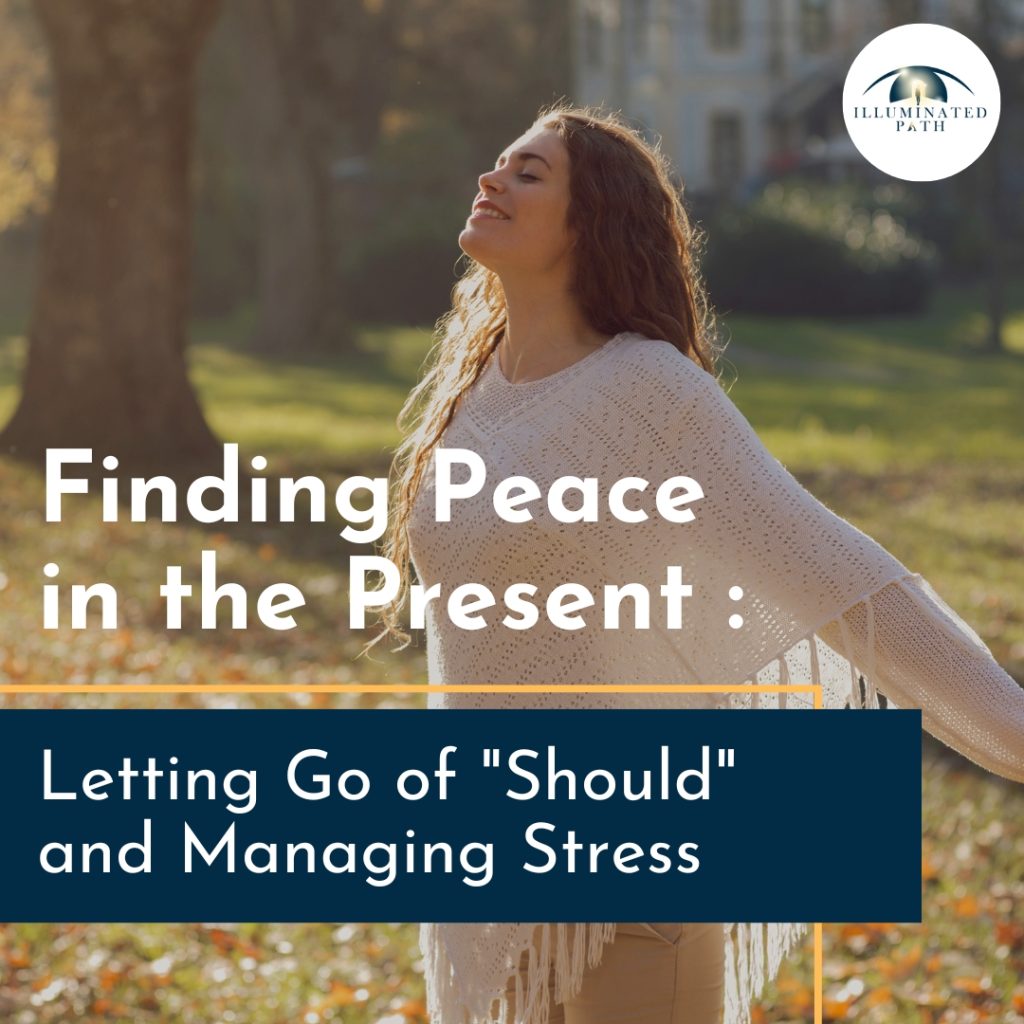
our struggle to accept reality as it is often lies at the root of our inner turmoil and contributes significantly to our stress levels. We cling to expectations, harbor resentments, and fight against the natural flow of life, creating unnecessary suffering. Our minds are wired to create order and predictability. We envision how things “should” be: the perfect job, the ideal relationship, the flawless life. But life, in its inherent nature, is unpredictable and messy. It rarely unfolds according to our meticulously crafted plans. This dissonance between our expectations and reality breeds discontent and stress. We resist what is, fueling a cycle of frustration, disappointment, and anxiety. We get caught in the “shoulds”: “I should be happier,” “My partner should be more understanding,” “Life should be easier.” This constant mental struggle keeps us in a state of chronic stress, which can have detrimental effects on our physical and mental health. The Connection Between Acceptance and Stress Management: Research has shown a strong correlation between acceptance and stress reduction. A study published in the Journal of Personality and Social Psychology found that individuals who practiced acceptance-based coping strategies experienced lower levels of stress and anxiety compared to those who engaged in avoidant or suppressive coping mechanisms. (source: Bond, F. W., & Bunce, D. (2000). Mediators of change in emotion-focused and problem-focused worksite stress management interventions. Journal of Occupational Health Psychology, 5(1), 156–163.) When we learn to accept life as it is, we reduce the internal conflict that fuels stress. We stop fighting against reality and instead focus our energy on navigating challenges with greater clarity and resilience. This acceptance allows us to respond to stressors in a more adaptive and constructive way. The Path to Inner Peace and Stress Reduction: The key to finding peace and managing stress, as Dyer suggests, lies in retraining our minds to accept life on its own terms. This doesn’t mean resigning ourselves to a life of passivity or giving up on our dreams. It means letting go of the rigid expectations that create resistance and suffering. Here are some ways to cultivate acceptance and reduce stress: Mindfulness: Practice being present in the moment, observing your thoughts and feelings without judgment. Notice when you’re caught in the “shoulds” and gently redirect your attention to the present reality. Gratitude: Cultivate an attitude of gratitude for what is, rather than focusing on what’s lacking. Appreciate the small joys and blessings in your life. Self-Compassion: Treat yourself with kindness and understanding, especially when things don’t go as planned. Remember that you’re human, and it’s okay to make mistakes or experience setbacks. Flexibility: Embrace the unpredictable nature of life. Be open to change and adapt to new circumstances with grace and resilience. The Rewards of Acceptance: When we let go of the need to control and manipulate life, we open ourselves to a deeper sense of peace and contentment. We free ourselves from the burden of expectations and allow ourselves to experience the beauty and richness of the present moment. This, in turn, reduces stress and promotes overall well-being. This doesn’t mean that life will suddenly become perfect or free from challenges. But by accepting reality as it is, we gain the clarity and inner strength to navigate life’s ups and downs with greater ease and resilience. Ultimately, peace is not something we find outside of ourselves. It is cultivated within, through a conscious choice to accept life as it unfolds, with all its imperfections and surprises. By embracing acceptance, we not only find inner peace but also equip ourselves with a powerful tool for managing stress and living a more fulfilling life. The Author Dr. Shadi Souferian Psy. D. Licensed Clinical Psychologist Therapist And Psychologist in Los Angeles And Beverly Hills. You might also enjoy this article: Finding Peace in the Present: Letting Go of “Should” and Managing Stress October 28, 2024By:RyoRelationshipCouple RelationshipMarriage0Comments Imperfection is a universal human experience. Yet, many of us strive for unattainable standards of…Read more Embracing Imperfection: A Path to Empathy and Acceptance October 17, 2024By:RyoRelationshipCouple RelationshipMarriage0Comments Imperfection is a universal human experience. Yet, many of us strive for unattainable standards of…Read more Relationship Roadblocks? Your Attachment Style Might Be the Key October 10, 2024By:Dr. Shadi Souferian, Psy.DRelationshipCouple RelationshipMarriage0Comments Do you ever find yourself wondering why you react the way you do in relationships?…Read more Is Marriage Counseling Right for Us? Signs It Might Be Time to Seek Help October 4, 2024By:Dr. Shadi Souferian, Psy.DRelationshipCouple RelationshipMarriage0Comments Marriage, a journey filled with love, laughter, and shared dreams, can also be a rollercoaster…Read more Hidden Scars: Unmasking the Impact of Childhood Trauma October 2, 2024By:Dr. Shadi Souferian, Psy.DTraumaChildhoodTrauma0Comments The weight of childhood trauma settles on the soul like an invisible cloak, its presence…Read more Finding Meaning in Life’s Transformations: Embracing Change with the Help of Psychology September 25, 2024By:Dr. Shadi Souferian, Psy.DLife TransformationLifetransition0Comments Life is a symphony composed with notes of joy, sorrow, triumph, and challenge. It’s a…Read more
